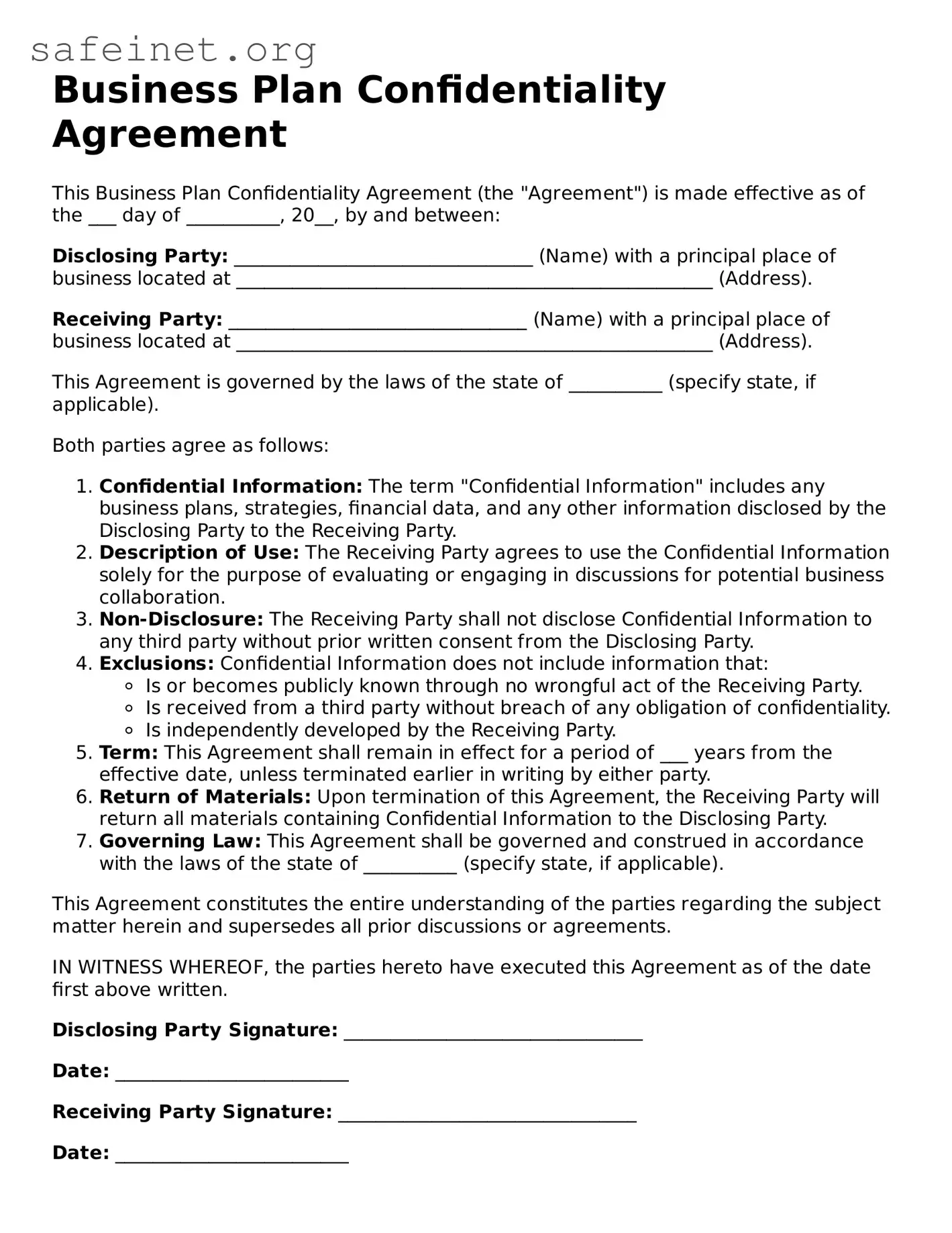Business Plan Confidentiality Agreement
This Business Plan Confidentiality Agreement (the "Agreement") is made effective as of the ___ day of __________, 20__, by and between:
Disclosing Party: ________________________________ (Name) with a principal place of business located at ___________________________________________________ (Address).
Receiving Party: ________________________________ (Name) with a principal place of business located at ___________________________________________________ (Address).
This Agreement is governed by the laws of the state of __________ (specify state, if applicable).
Both parties agree as follows:
- Confidential Information: The term "Confidential Information" includes any business plans, strategies, financial data, and any other information disclosed by the Disclosing Party to the Receiving Party.
- Description of Use: The Receiving Party agrees to use the Confidential Information solely for the purpose of evaluating or engaging in discussions for potential business collaboration.
- Non-Disclosure: The Receiving Party shall not disclose Confidential Information to any third party without prior written consent from the Disclosing Party.
- Exclusions: Confidential Information does not include information that:
- Is or becomes publicly known through no wrongful act of the Receiving Party.
- Is received from a third party without breach of any obligation of confidentiality.
- Is independently developed by the Receiving Party.
- Term: This Agreement shall remain in effect for a period of ___ years from the effective date, unless terminated earlier in writing by either party.
- Return of Materials: Upon termination of this Agreement, the Receiving Party will return all materials containing Confidential Information to the Disclosing Party.
- Governing Law: This Agreement shall be governed and construed in accordance with the laws of the state of __________ (specify state, if applicable).
This Agreement constitutes the entire understanding of the parties regarding the subject matter herein and supersedes all prior discussions or agreements.
IN WITNESS WHEREOF, the parties hereto have executed this Agreement as of the date first above written.
Disclosing Party Signature: ________________________________
Date: _________________________
Receiving Party Signature: ________________________________
Date: _________________________
